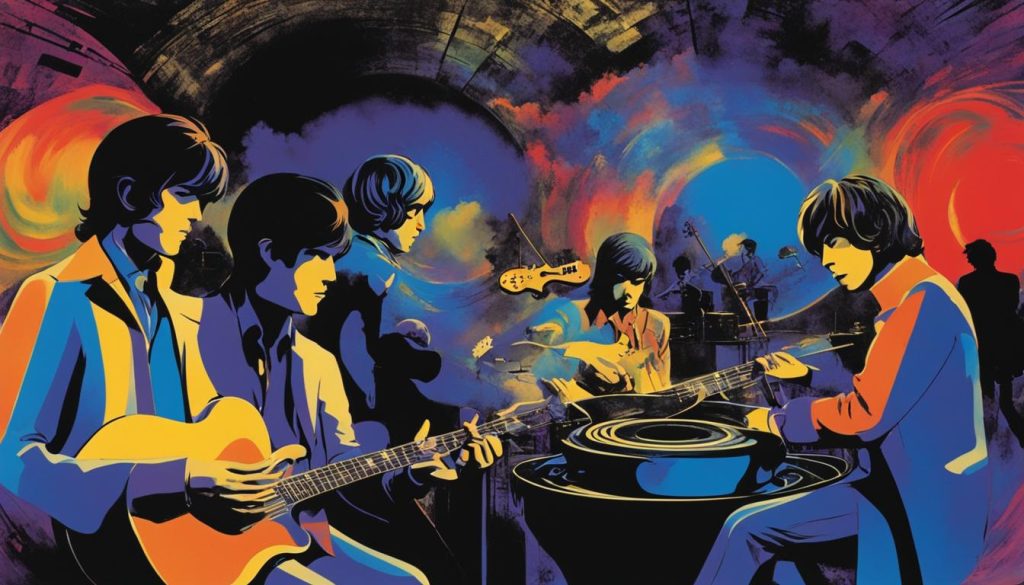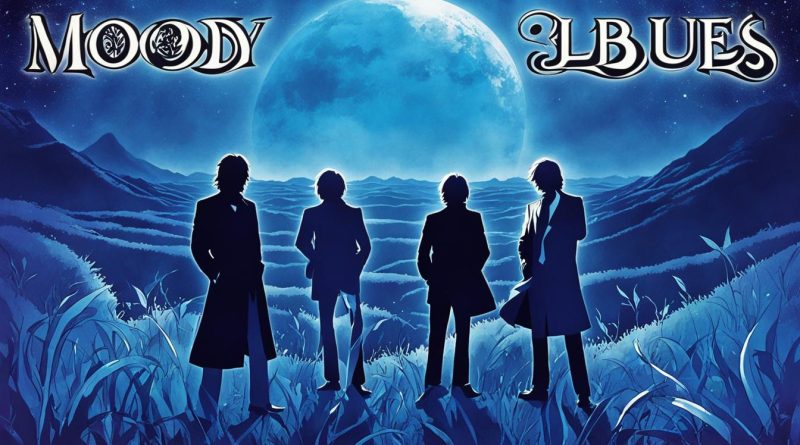The Moody Blues: Pioneers of Progressive Rock
The Moody Blues, a band hailing from Birmingham, England, is widely recognized as one of the most significant contributors to the progressive rock movement. With a career spanning over five decades, The Moody Blues have left an indelible mark on the music industry, not only with their innovative sound but also with their influence on subsequent generations of artists.
The band produced a stream of multi-platinum albums and chart-topping hits throughout the 1960s and 1970s, capturing the essence of the genre with their meticulous storytelling skills and exquisite orchestral arrangements.
Key Takeaways
- The Moody Blues is a band from Birmingham, England recognized for their pioneering contribution to the progressive rock genre.
- The band’s innovative sound and progressive composition techniques have influenced several generations of artists in the music industry.
- The Moody Blues produced a series of multi-platinum albums, including “Days of Future Passed” and “Nights in White Satin”, that showcased their storytelling skills and orchestral arrangements.
- Their contribution to the music industry has earned them several accolades, including induction into the Rock and Roll Hall of Fame.
- The Moody Blues continue to inspire music enthusiasts and resonate with audiences all over the world, cementing their place as pioneers of progressive rock.
The Origins of The Moody Blues
The Moody Blues originated from Birmingham, England, in the early 1960s. The band began as a rhythm and blues group, with founding members including Ray Thomas, Mike Pinder, and Denny Laine. However, as their music began to evolve, they became pioneers of the progressive rock genre, incorporating orchestral arrangements and thought-provoking lyrics into their sound.
One of the early influences on The Moody Blues was American R&B music, which they interpreted in their own unique way. They also drew inspiration from the poetic imagery of William Shakespeare and the Romantic poets, which is evident in their later work.
In their early years, the band gained popularity in the UK through energetic live performances, and they released their debut album “The Magnificent Moodies” in 1965. However, it wasn’t until their second album, “Days of Future Passed,” in 1967, that they truly made their mark as innovative musicians.
With “Days of Future Passed,” The Moody Blues brought a new level of sophistication to rock music by incorporating a full orchestra, creating a concept album that flowed seamlessly from song to song. This album went on to become a critical and commercial success, setting the stage for their future musical achievements.

The Moody Blues continued to push musical boundaries with subsequent albums such as “In Search of the Lost Chord” and “On the Threshold of a Dream,” cementing their reputation as one of the most important bands of the progressive rock era. Their unique blend of rock, classical music, and poetry left a lasting impression on music fans around the world.
Key Albums and Musical Achievements
The Moody Blues have released several noteworthy albums throughout their career, showcasing their musical versatility and creativity. One of their most acclaimed albums is “Days of Future Passed,” a concept album that merged rock music with orchestral sounds. It features iconic songs such as “Nights in White Satin” and “Tuesday Afternoon,” both of which remain popular to this day.
“Nights in White Satin,” in particular, propelled The Moody Blues to international stardom. Its unique sound and haunting melody stood out among the other songs on the radio during the time of its release. It also highlighted the band’s innovative use of orchestral music, a groundbreaking approach that has since been emulated by countless artists.
The Moody Blues’ impact on the music industry goes far beyond their unique sound. They have been recognized for their musical achievements, including their induction into the Rock and Roll Hall of Fame in 2018. Their influence on subsequent generations of musicians is immeasurable, solidifying their place in music history.

The Moody Blues Discography
| Album Title | Release Date |
|---|---|
| The Magnificent Moodies | 1965 |
| Days of Future Passed | 1967 |
| In Search of the Lost Chord | 1968 |
| On the Threshold of a Dream | 1969 |
| To Our Children’s Children’s Children | 1969 |
| A Question of Balance | 1970 |
| Every Good Boy Deserves Favour | 1971 |
| Seventh Sojourn | 1972 |
| The Present | 1983 |
| The Other Side of Life | 1986 |
| Sur la Mer | 1988 |
| Keys of the Kingdom | 1991 |
Note: This is not an exhaustive discography.
Conclusion
In conclusion, The Moody Blues have left an indelible mark on the music industry and their legacy as pioneers of progressive rock continues to inspire generations. Their imaginative use of orchestral arrangements and lyrical storytelling established a new standard for rock music, defining what it means to be a true artist. The band’s ability to evolve their sound, as evidenced by their successful transition from rhythm and blues to progressive rock, shows their exceptional musical talent and creativity.
The Moody Blues’ influence on subsequent generations of musicians is undeniable, and their contributions to music history cannot be overstated. Their innovative sound and thought-provoking lyrics continue to resonate with audiences worldwide, cementing their place as one of the most significant bands of the twentieth century. Their induction into the Rock and Roll Hall of Fame in 2018 is a testament to their enduring impact and cultural significance.
In short, The Moody Blues’ legacy will continue to live on, inspiring music enthusiasts for years to come. Their ability to push the boundaries of what is possible in music and leave a lasting impression on fans is a testament to their exceptional talent and dedication. The Moody Blues will always be remembered as one of the greatest bands of all time, and their contributions to the progressive rock genre will be forever cherished.
FAQ
Who were the members of The Moody Blues?
The Moody Blues consisted of Justin Hayward, John Lodge, Graeme Edge, Ray Thomas, and Mike Pinder.
When was The Moody Blues formed?
The Moody Blues was formed in 1964 in Birmingham, England.
What genre of music did The Moody Blues create?
The Moody Blues were pioneers of progressive rock music.
What were some of The Moody Blues’ notable albums?
The Moody Blues released several noteworthy albums, including “Days of Future Passed,” “Nights in White Satin,” and “In Search of the Lost Chord.”
What was unique about The Moody Blues’ sound?
The Moody Blues incorporated orchestral arrangements and concept-driven storytelling into their music, which set them apart from other bands at the time.
Have The Moody Blues been recognized for their contributions to music?
Yes, The Moody Blues were inducted into the Rock and Roll Hall of Fame in 2018.
What is The Moody Blues’ legacy in the music industry?
The Moody Blues’ innovative sound and thought-provoking lyrics have had a lasting impact on progressive rock and continue to resonate with audiences worldwide.
